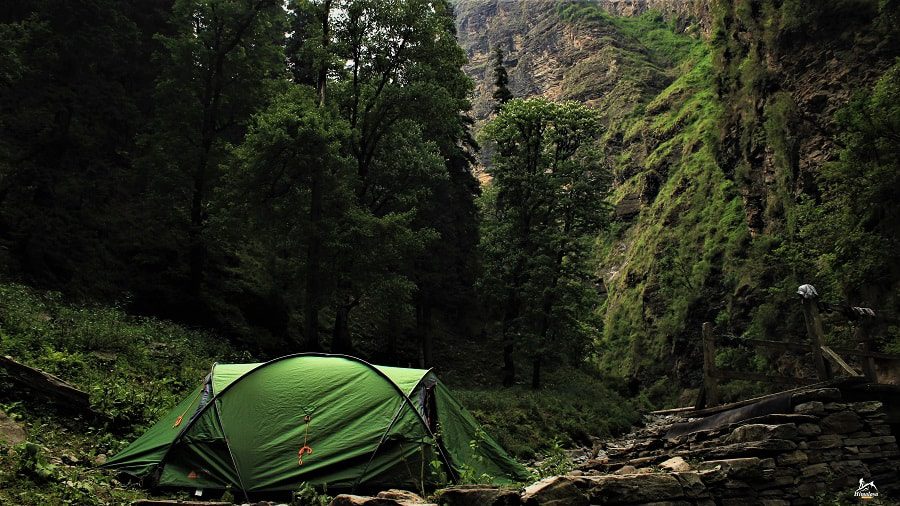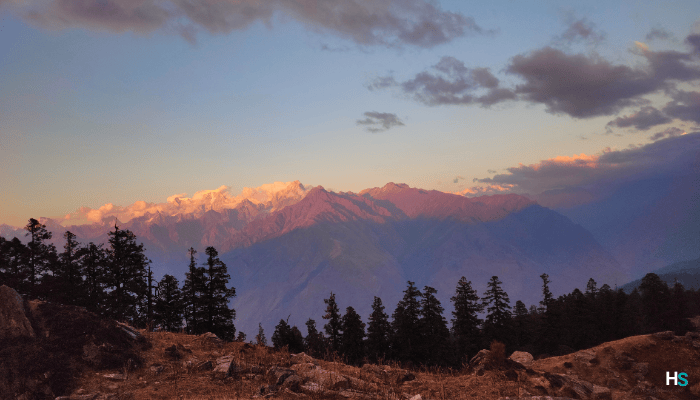
Safety Tips For Trekking : 8 Essentials To Note
Trekking in the Himalayas is a voyage into the splendor of nature, where imposing peaks, serene valleys, and a diversity of cultures join together to create a unique experience. Given this breathtaking environment, it is crucial to comprehend the need for meticulous preparation and safety tips for trekking. The Himalayas provide both the allure of discovery and the need for tenacity.
Why trekking in the Himalayas is special and the importance of preparation?
Safety is of utmost importance among the majestic Himalayas. The foundation of a successful journey is enough planning. It requires careful preparation, physical preparedness, knowledge of mountain safety tips for camping, safety tips for trekking, and adherence to camping. Whether you are an experienced hiker or setting out on your first Himalayan expedition, careful planning ensures that every step into this captivating landscape is a step toward both thrill and safety tips for trekking.
1. Planning Your Himalayan Trek:

- Choosing the Best Trekking Route: The Himalayas offer a wide variety of trekking routes, each with a distinct appeal and degree of difficulty. It’s crucial to study hard and choose a subject that complements your skills and physical qualities.
- Seasonal Factors: The success of a Himalayan expedition depends on timing. Find out when is best to travel based on your preferences and local weather patterns.
- Obtaining Permits: In certain Himalayan regions, permits are necessary for trekking. Make sure you have the necessary papers and abide by any local regulations.
- Solo or Group Trekking: Depending on your tastes, decide whether to go hiking alone or in a group. Group treks provide protection and camaraderie in contrast to solo treks, which provide independence and solitude.
2. Body Preparedness:

- Physical fitness and conditioning: Walking at high altitudes requires maintaining optimum physical fitness and conditioning. You must begin a training regimen long before your trek to increase your strength and endurance.
- Health Examinations: Before your expedition, consult with a medical professional to have a complete health examination performed. Take care of any underlying health concerns to make sure you are ready for your vacation.
- Packing essentials: Careful packing is necessary. Choose proper footwear, carry spacious daypacks and backpacks, and dress in layers to accommodate changing weather.
3. Important Equipment and Tools:

The gear you decide to bring on your Himalayan journey might spell the difference between life and death. Wearing cozy, perspiration-wicking apparel is the best defense against temperature swings. You’ll need sturdy, supportive hiking boots to navigate hazardous terrain securely. In addition to carrying your necessities, your backpack should equally distribute the weight to minimize physical strain. Not to mention maps, camping gear, and a fully stocked first aid kit. To be ready for everything the Himalayas may throw at you, each piece of equipment has a crucial function.
4. Water Intake and Food Intake:
- Water sources and purification: When getting water in the Himalayas, be cautious. Carry water purification equipment to ensure that you have access to clean drinking water for hydration while out on your stroll.
- High-altitude nutrition: Consume a balanced meal that is rich in carbohydrates and proteins to keep your energy levels and endurance in check.
- Planning Your Meals Carefully: Carefully schedule your meals, taking into account your dietary choices and restrictions, to ensure that you have enough food for your stroll.
5. Learning About the Local Community and Culture:

- Language and Communication: To enhance communication and demonstrate respect for local customs, learn some basic regional terms and phrases.
- Support Local people: When traveling ethically, use products made locally and respect the traditions of the Himalayan people you come across while walking.
6. Finding Directions and Navigation:

The key to completing a Himalayan journey is preparation. Maps and navigation software may help you stay on the right path, but it’s also important to get acquainted with the route beforehand. When traveling across new regions, GPS gadgets are highly helpful since they offer precise location data. Consider using competent local guides who can rely on their vast local expertise to increase the quality and safety tips for trekking. You can stay on course, arrive at your destination, and fully enjoy your adventure over the Himalayas with the appropriate advice.
7. Campgrounds and lodging:

- For the sake of both environmental preservation and safety tips for trekking, choosing the correct campsites is crucial. Think about topics like accessibility, safety, and minimizing your influence on the environment.
- Learning how to put up tents properly can provide a secure and comfortable stay while you’re hiking. Cook using portable stoves and get acquainted with campfire safety tips for trekking measures.
8. Health and Wellness on the Trail:
It is vital to preserve your health and wellness when crossing the Himalayas. It’s crucial to spot the symptoms of altitude sickness and take preventative measures. Procedures for hygiene and sanitation protect both you and the breathtaking natural environment of the Himalayas. It’s important to always have a first aid kit available and know how to handle minor diseases and injuries. If you want to have a safe and enjoyable trek across the stunning Himalayan Mountains, place a high priority on your physical well-being and properly organize your trip. Your physical health is your most valuable asset when traveling.
Conclusion:
In the Himalayan Mountains, safety is of the highest concern. Following camping safety precautions, safety tips for trekking alone, and taking the proper safety precautions for trekking are essential for a safe journey. These safety measures ensure that you may fully take in the beauty of nature, interact with the local people, and enjoy the breathtaking vistas without taking unneeded risks. You want your vacation to the Himalayas to be memorable for all the right reasons, and by prioritizing safety tips for trekking, you can take full advantage of every moment while creating precious memories in this breathtaking location. It is important to treasure the opportunity to cross the Himalayas on foot.
FAQs:
Is trekking in the Himalayas safe?
What should I do before starting a Himalayan trek?
What gear do I need for a Himalayan trek?
How should I prepare for high altitudes?
What about safety during river crossings?
How can I prevent hypothermia in cold weather?
Are there any health precautions I should take?
What should I do in case of an emergency?
About Author

Himalaya Shelter
Recent news

20 Dec 2025

18 Dec 2025

16 Dec 2025

10 Dec 2025
Recommended Treks

Cost: ₹9900 | $114
Type: Easy
Best Time: April to June and September to November





